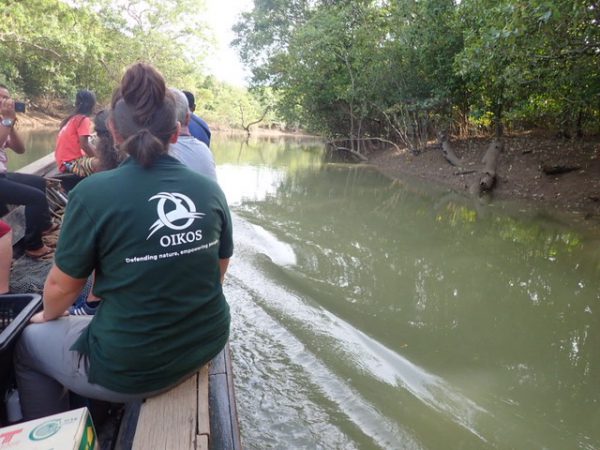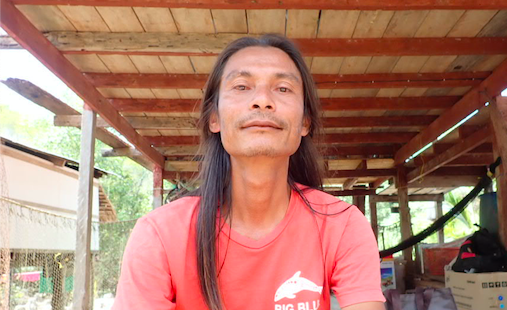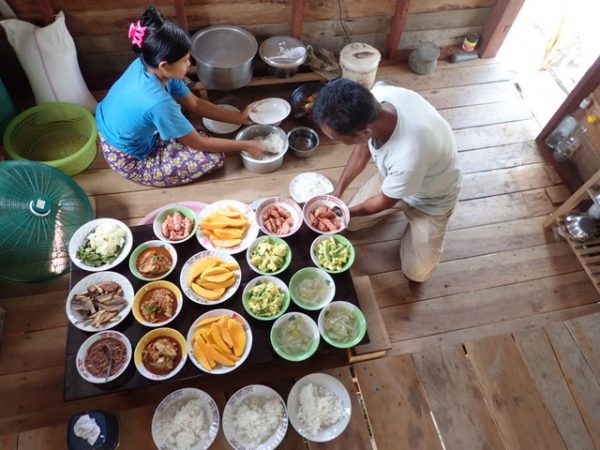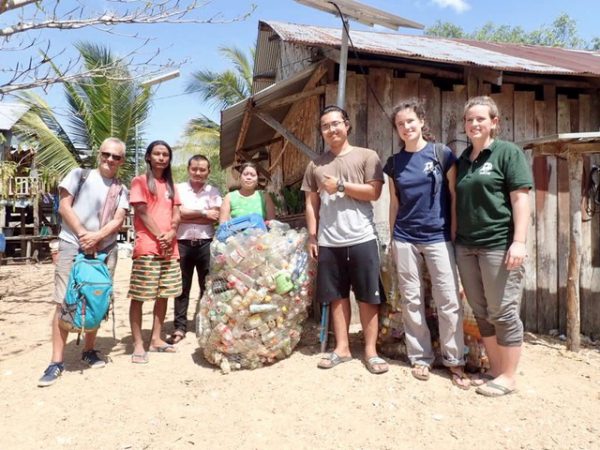KAWTHAUNG, Myanmar, 17 March 2020: A tiny Burmese hamlet of rickety wooden stilt-houses looking out across a broad estuary to neighbouring Thailand is the test-site for a new responsible tourism project which aims to better lives, conserve neglected habitats, and provide adventurous visitors with an authentic non-touristy experience.
At a time when the daily news is dominated by the coronavirus (Covid-19), travel restrictions and flight suspensions, a new tourism product has just been launched, providing an antidote to over-tourism and rampant commercial tourism.
The development of a small-scale Community-Based Tourism (CBT) initiative in the ramshackle village of Wae Ngae along with efforts to improve waste management is just one endeavour among many in southern Myanmar’s Tanintharyi region undertaken by the Italian NGO OIKOS (www.istituto-oikos.org/en).

It is part of the NGO’s STAR Programme which focuses on Lampi Marine National Park in the Mergui Archipelago and Kawthaung district on the mainland.
Biodiversity and sustainable development experts at OIKOS have been in Myanmar for more than a decade, with STAR launched in late 2018. Funded by the Italian government and private donors, the three-year project aims to promote well-being and social inclusion, as well as to work alongside communities to protect soil, water, forests and wildlife according to Istituto Oikos country director and STAR Project manager Daniele Alleva.
“This is part of our efforts to promote responsible tourism models and practices in the Kawthaung area, involving small communities, civic groups, local government and the private sector,” says Alleva.

While the Myanmar government has recognised the important role of tourism in the newly-democratic nation’s economic development, the southern region has been identified as a region with untapped potential. Past exploitative forestry, mining and fishing practices have damaged the environment, with vast plantations producing palm oil and rubber and a smuggler economy meaning little of the region’s wealth from natural resources trickles down to ordinary Burmese.
The inequalities are highlighted at Wae Ngae village, where residents struggle to survive, fishing at night the river estuary, trapping crabs and farming oysters and mussels on the tidal mudflats and mangrove forest riverbanks. Literally, at the outer margins of Myanmar, Thailand is tantalisingly close across the wide river known as the Panchang on the Myanmar side but called the Kraburi on the Thai side, where it has Thailand’s largest preserved mangrove forests. The river which runs down from the jungled Tenasserim Range divides the two nations, spreading to a 6km-wide mouth.

With no road access, the only way from the port of Kawthaung, with its fishing boat flotilla and abandoned or confiscated vessels, to Wae Ngae is by noisy open long-tail boat, with two-hour journeys upriver having to coincide with the tides and sometimes contend with choppy seas. As brahminy kites and sea eagles soar and circle on thermals, Alleva says for intrepid visitors there are opportunities for birdwatching, spotting dolphins, visiting fish and shellfish farms, and kayaking in the mangroves. “This project is ultimately run by the community, to ensure sustainability,” he says, introducing Shwe Fun from the partner organisation Parchan River Conservation and Development Association (PRCDA).
Tall, skinny, long-hailed Shwe Fun, who sits cross-legged at the long tail’s bow, looking like a native American Indian, says there are many challenges including lack of facilities and infrastructure, as well as no ferry transport to the villages dotted along the coast.
Despite the subsistence existence of the inhabitants of Wae Ngae and its larger twin settlement of Wae Gyi, they manage to prepare a banquet of freshly-prepared dishes is served for visitors upstairs in a newly-constructed stilt-house. A locally-harvested medicinal root, similar to cassava, is served in a tonic drink with honey, preserved in whisky.

As well as the CBT initiative, OIKOS has undertaken waste awareness campaigns in many villages. “Wae Ngae is one of five villagers where we are promoting social inclusion by income-generating activities including a waste management project to enable participants to earn money instead of discarding the trash,” says ecologist Cristina Tha, an assistant project manager with OIKOS, showing the area behind the settlement set aside to consolidate the rubbish. In front of most houses, are small fish from the previous night’scatch that are split in half and left to dry on racks in the sun.
Later the open-air downstairs area is used for a meeting about the village’s waste recycling programme which sees rubbish sorted for re-use, recycling, or disposal. Plastic which cannot be re-used is burned at high temperatures, while glass and cans along with scrap metal are ferried to Kawthaung or across the river to Thailand, where it can be sold. “It has been a challenge to get community buy-in, but at Wae Ngae they have an incentive to sort the trash, as the village makes money by selling it, mainly to Thailand, if the price is better than available in Kawthaung,” says assistant project manager Giulia Cecchinato, who has a background in forest management.
From Wae Ngae it is a pleasant 15-minute walk through leafy areca palms which yield betel nut, and rubber plantations where the bark is cut to bleed white latex into coconut shell cups, to Wae Gyi, where an open rubbish dump sits between the shoreline and the primary school and hilltop Buddhist monastery. Visitors to the area will be able to venture up a tributary of the Panchang River where ancient mangrove forest line the tidal stream, and clamber up a hillside for a panoramic view of the tropical jungle, before heading back to the bright lights of Kawthaung or Ranong, or the Andaman Club Casino on a nearby island.
Visitor numbers to Kawthaung have increased in recent years, as the border port is the gateway to Mergui archipelago’s new resorts such as Wa Ale Resort and Boulder Bay Eco-Resort, though many of the visitors are day-trippers from Thailand, or foreigners on a quick visa run. There’s hope that backwaters on the estuary and among the mangroves such as Wae Ngae and Wae Gyi might benefit from the growth in tourism. Last week, the village of Wae Ngae received its first guests.
(Source: Report and photos by Keith Lyons)

Keith Lyons (keithlyons.net) is an award-winning writer from New Zealand, based in Asia. ‘Opening Up Hidden Myanmar’ (Duwon Books) along with his writing and photographs contributed to ‘The Best of Myanmar: The Golden Land of Hidden Gems’ (KMG) will be published shortly.






